On View
8 Must-See Shows at This Year’s London Gallery Weekend
London's expansive gallery scene is serving up another bumper crop of exhibitions, talks, and performances.
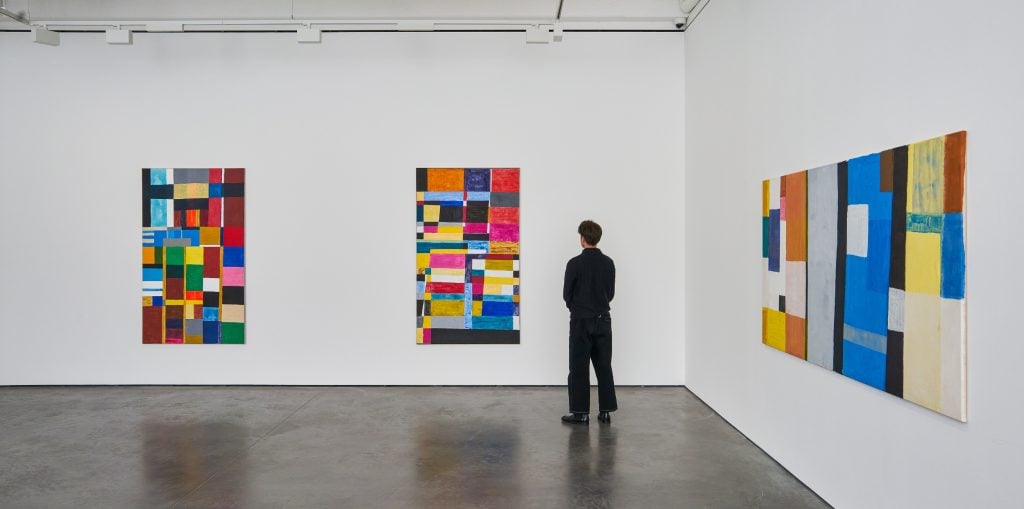
London's expansive gallery scene is serving up another bumper crop of exhibitions, talks, and performances.

Jo Lawson-Tancred

The London art scene has been busy installing its final batch of exhibitions before collectors flee en masse to some far-flung villa or yacht this summer. To mark the occasion, the fourth edition of London Gallery Weekend (May 31–June 2) has partnered with 130 galleries to offer its usual program of free events, talks, public performances, and parties.
Among the highlights this year will be curated walking routes by the likes of artist Lubaina Himid, curator Hans Ulrich Obrist, and editor Edward Enninful. The filmmaker John Akomfrah, who is currently representing Great Britain at the Venice Biennale, is also unveiling new work as part of the Cork Street Banner Commission.
Despite ongoing concerns about London’s health as a global art capital post-Brexit, this weekend offers a chance for the U.K.’s sprawling capital to flaunt its lively and diverse gallery scene. From NW to SE, here are the shows that have caught our eye.
Atta Kwami at Goodman Gallery
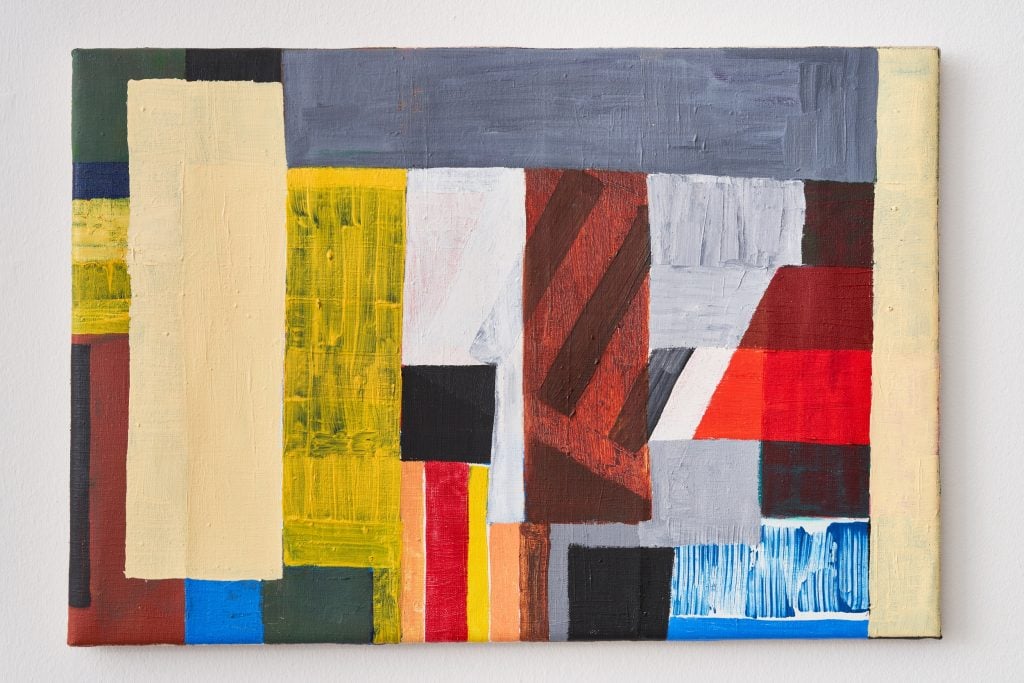
Atta Kwami, Yibor Square (2018). Photo courtesy of Goodman Gallery.
In 2021, the Ghanaian artist and scholar Atta Kwami received a long overdue boost in global attention after winning the prestigious Maria Lassnig prize, which honors overlooked late-career artists. His award, a large-scale public mural commission at Serpentine North in London’s Kensington Gardens, remains on view until September 30. That same year, however, Kwami sadly died at the age of just 65, leaving behind a trove of bold abstract canvases composed from interlocking planes of color. Some highlights from his estate made between 1999 and 2021 are now on view at Goodman Gallery on Cork Street, including Money Can’t Buy It (2019), a large, walkthrough structure conceived as a “three-dimensional painting.”
With a career spanning four decades, Kwami’s work is held in the collections of the Met, the British Museum, the V&A, and the national museums of Ghana and Kenya. This spring, the Serpentine is publishing a landmark monograph dedicated to Kwami and its editor, Melissa Blanchflower, will give a talk at Goodman Gallery on May 31 at 11 a.m.
Cara Benedetto’s “White Girl Wasted” at Rose Easton
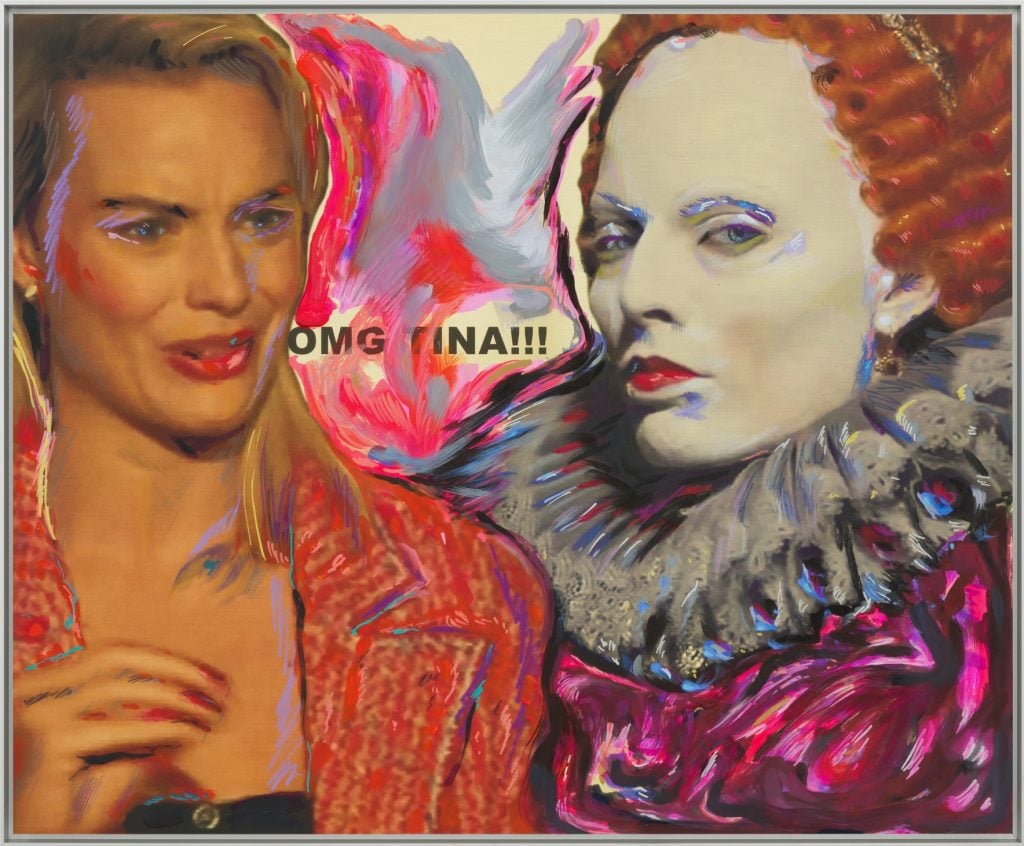
Cara Benedetto, Barbie Does Tina (2024). Photo: Jack Elliot Edwards, of the artist, Rose Easton London, and Chapter NY.
Sometimes thought-provoking art can lean a little dry, but Rose Easton’s East London gallery has a reputation for shaking things up. For those hoping for an injection of humor, look no further than Cara Benedetto’s irreverent exploration of the term “white girl wasted,” which originated online to describe a liberated, messy woman who doesn’t wish to be aware of the real privilege she wields. The works are filled with fun pop cultural references, from the bland corporate feminism of Barbie (2023) to the accidentally camp biopic Spencer (2021), in which Kristen Stewart makes an unlikely appearance as a woefully forlorn Princess Diana. The works ask: Where sits the line between victimhood and complicity?
Adam Rouhana’s “Before Freedom Pt.2” at T.J. Boulting
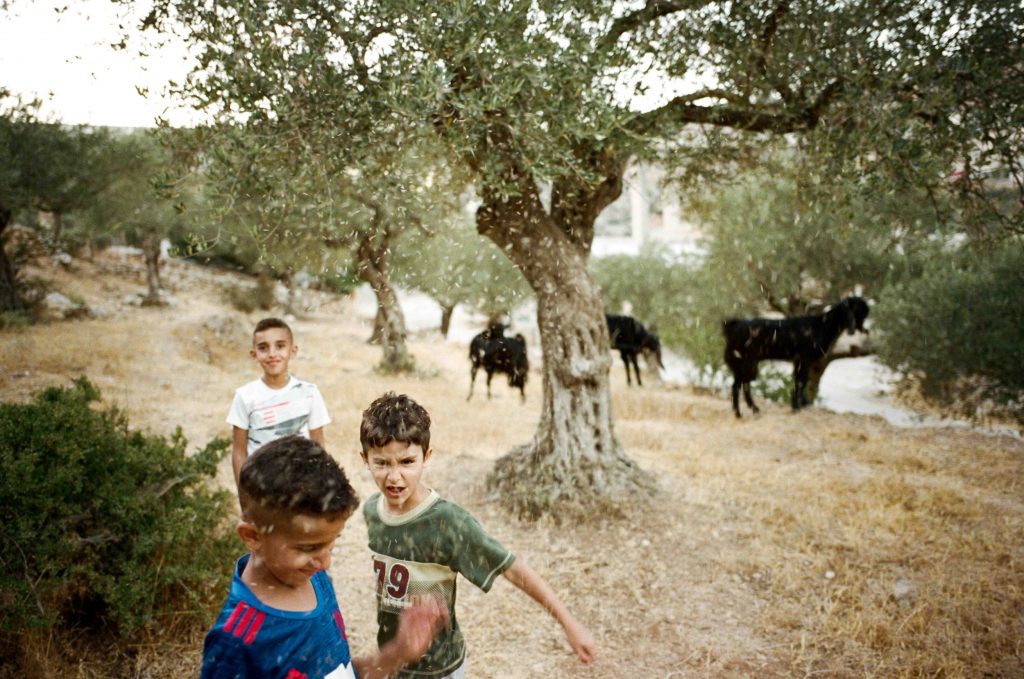
Adam Rouhana, Under the Olive Trees (تحت الزیتون). Photo courtesy of the artist.
Fresh off the back of “Before Freedom” at Frieze No. 9 Cork Street comes Palestinian-American activist and photographer Adam Rouhana’s next chapter, “Before Freedom Pt. 2,” celebrating the beauty and small joys of everyday life in his homeland. While our TVs and social media channels are flooded with urgent footage of terrible suffering in Gaza, Rouhana’s poignant photographs, which have also touched a wide audience on Instagram, offer subtly defiant scenes of resilience, community, and hope.
In a recent essay for the New York Times, Rouhana described annual trips to Palestine as a child that he began documenting with a camera. “In the news media, Palestinians were often portrayed as masked and violent or as disposable and lifeless: a faceless, miserable people,” he wrote, noting that these images make it “easier for the viewer to see Palestinians as silhouettes who have always been this way instead of as people with entire lives, histories, and dreams.”
He added: “Instead, what I photograph is unconditional communal love, a rootedness and sense of historical belonging in the land, and a daily generosity and collective spirit that I rarely experience in America.”
“Intension” at Copperfield
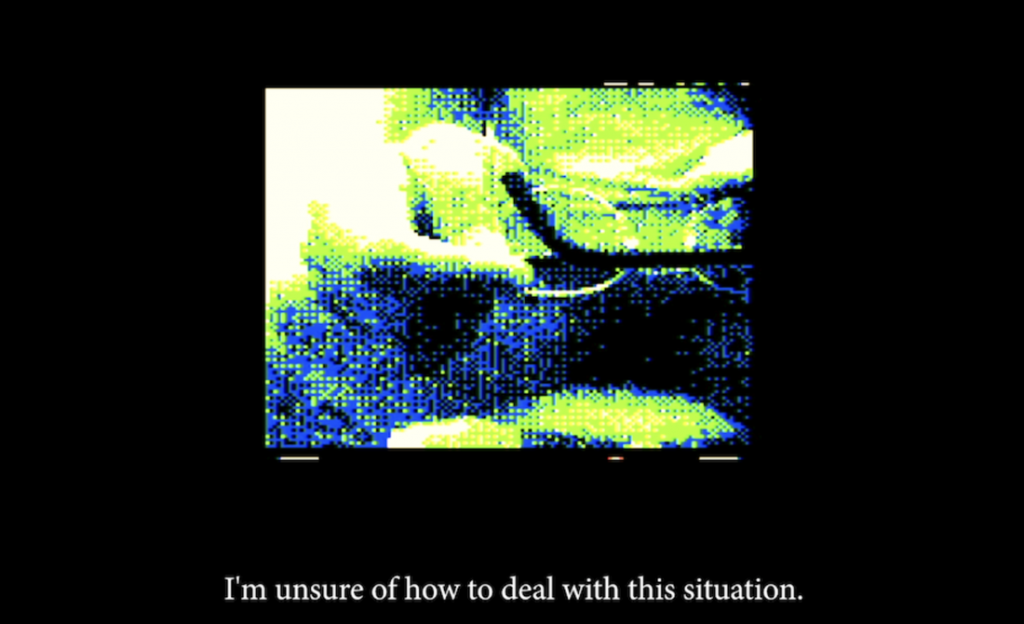
Still from Larry Achiampong, A Letter (Side B) (2023). Image courtesy of Copperfield.
Historically, a disability was treated as something to either mask or overcome. This survey show brings together work by neurodivergent artists and, according to Copperfield’s founder William Lunn, makes the case that “for any problems it might cause them, I believe that they couldn’t have achieved what they have without it.” He adds that many neurodivergent people still live with the memory of having their abilities and intellect dismissed from a young age, even as their heightened senses and idiosyncratic modes of thinking have shaped successful artistic practices.
Experiences of the world through the lens of autism, Attention Deficit Hyperactivity Disorder (ADHD), and dyspraxia, to name just a few, are addressed with refreshing candor in works by artists like Larry Achiampong, Lucas Dupuy, and Alberta Whittle. Additionally, the gallery is celebrating its 10th anniversary this London Gallery Weekend, having launched in May 2014 with the exhibition “Obsessive Compulsive Disorder.”
Euan Uglow at Hazlitt Holland-Hibbert
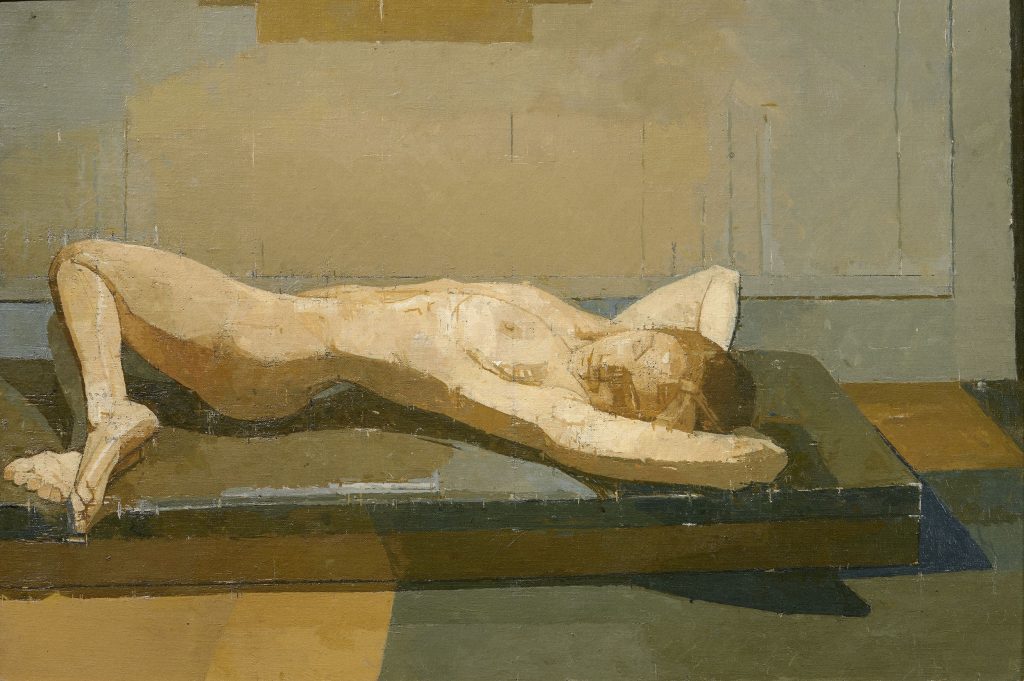
Euan Uglow, Propeller (1994-95). Photo: © The Euan Uglow Estate, courtesy of Hazlitt Holland-Hibbert.
A new show honors one of the late greats of British art, Euan Uglow, with 25 notable examples of his celebrated nudes, still lifes and landscapes, including several loans from public collections. Influenced by teachers like Victor Pasmore and William Coldstream, and later associated with the London school of figurative painters, Uglow was critically acclaimed for his simple but rigorous compositions of great understated beauty.
Uglow has been overdue a major institutional show since his death in 2000. This latest exhibition is curated by art historian and former director of Whitechapel Gallery, Catherine Lampert. The occasion marks half a century since she first organized a touring show of Uglow’s early works for the U.K.’s Arts Council in 1974.
Kenturah Davis’s “clouds” at Stephen Friedman
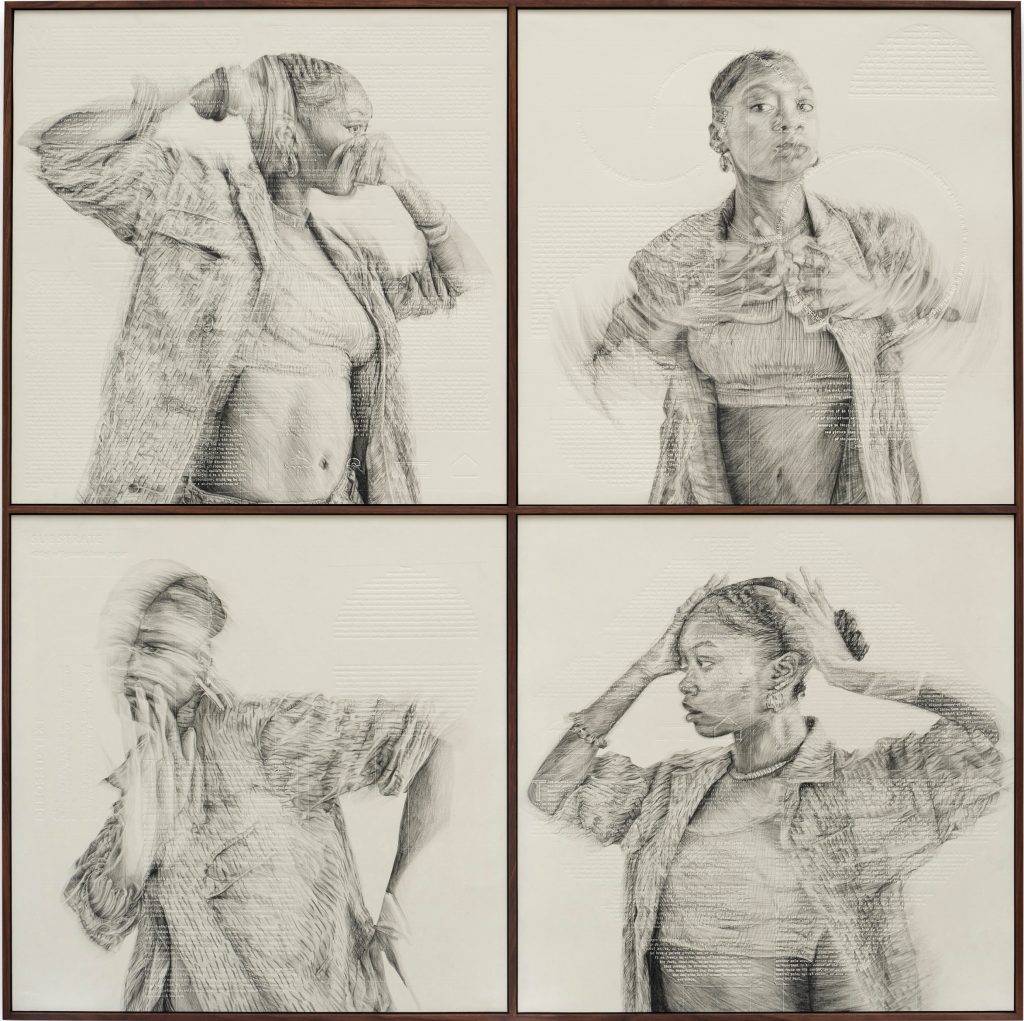
Kenturah Davis, planar vessel XXVII (jada) (2024). Photo: Paul Salveson.
Is a picture worth a thousand words? Kenturah Davis, who is based between Los Angeles and Accra, gives us both in a new series of monochromatic portraits. Rather than have the sitter sit stiffly in a contrived pose, Davis encouraged her subjects, all dancers, to move in a way that felt natural and captured them in this state of flow using long-exposure photography. The eventual drawn versions reward close looking, as they are woven through with text borrowed from an essay by Davis that ruminates on a wide range of themes from theoretical physics to the work of writers and thinkers like Toni Morrison and Saidiya Hartman.
“I focused around this idea of thinking about language as a kind of choreography, in the way that architecture can guide you through a space or design can tell you how to reach out and grab something with a handle,” said Davis. “In what ways can language function as a choreography too?”
Harminder Judge’s “A Ghost Dance” at Matt’s Gallery and The Sunday Painter
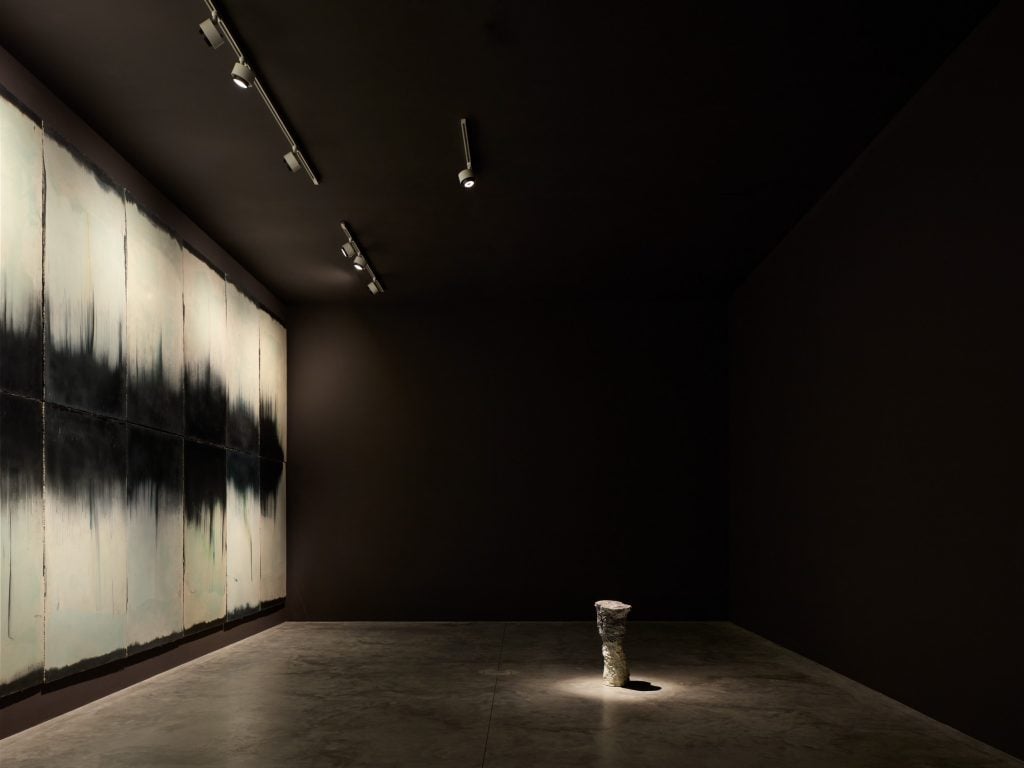
Installation view of Harminder Judge, “A Ghost Dance” at Matt’s Gallery in London for London Gallery Weekend 2024. Photo: Ollie Hammick.
This collaborative effort between two South London galleries just a ten minute walk from each other presents new work reflecting on the cultural importance of funeral rites as the once physical being becomes an apparition, whether in a spiritual sense or in the minds of those that live on. The artist’s references are myriad, but include rituals from Punjabi tradition as well as a Native American ceremonial circle dance.
Visit The Sunday Painter to see a new, in situ “cadaver-like” sculpture, while more abstracted urns and totems turned into spotlit monuments at Matt’s Gallery. These works are the subject of a new essay by writer Susanna Davies-Crook, who will also be in conversation with the artist at Matt’s Gallery on June 1.
Otobong Nkanga’s “We Come from Fire and Return to Fire” at Lisson Gallery
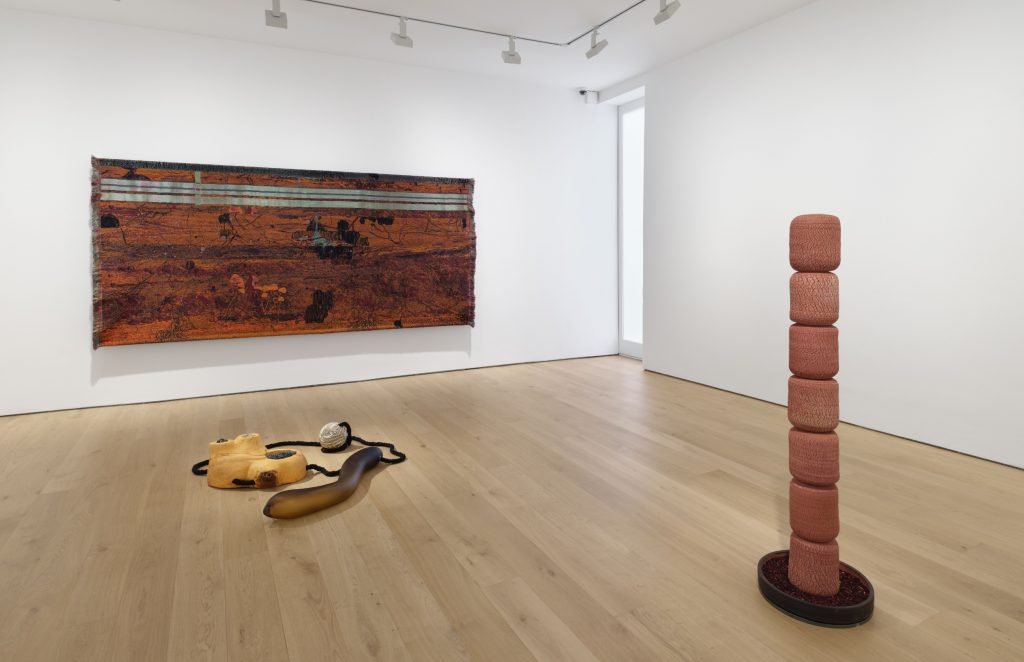
Installation view of Otobong Nkanga at Lisson Gallery during London Gallery Week 2024. Photo courtesy of Lisson Gallery.
Material investigations run through Otobong Nkanga’s new series of woven wall hangings and floor-based objects, many of which have been strung together with rope. For her debut at Lisson Gallery, the Nigerian artist is staying true to form with highly conceptual pieces that explore our relationship to, not to say reliance on, land and the natural world through an impressive range of media. Expect to bathe in richly textural surfaces from thickly layered and knotted fiber to colorful craquelure.
